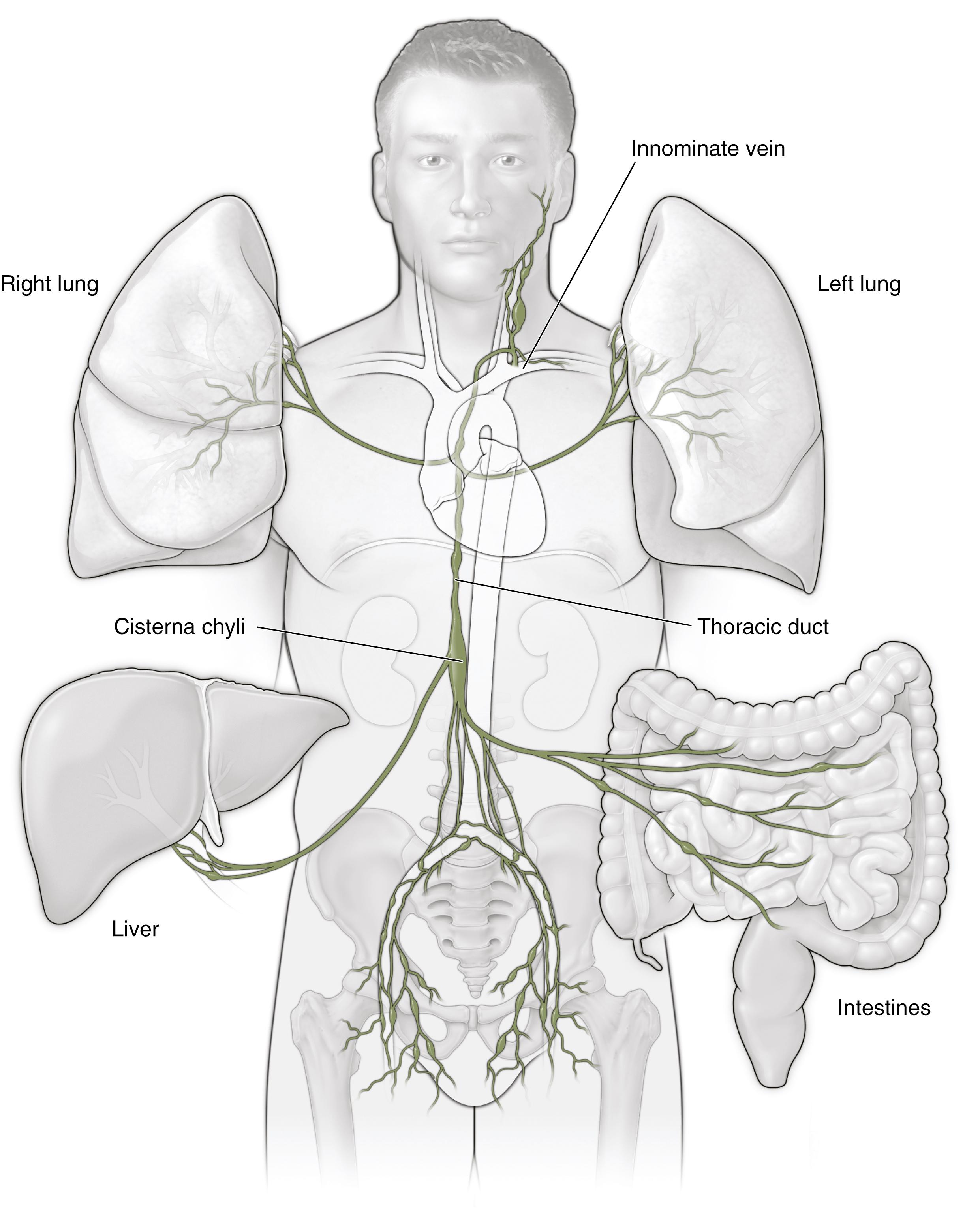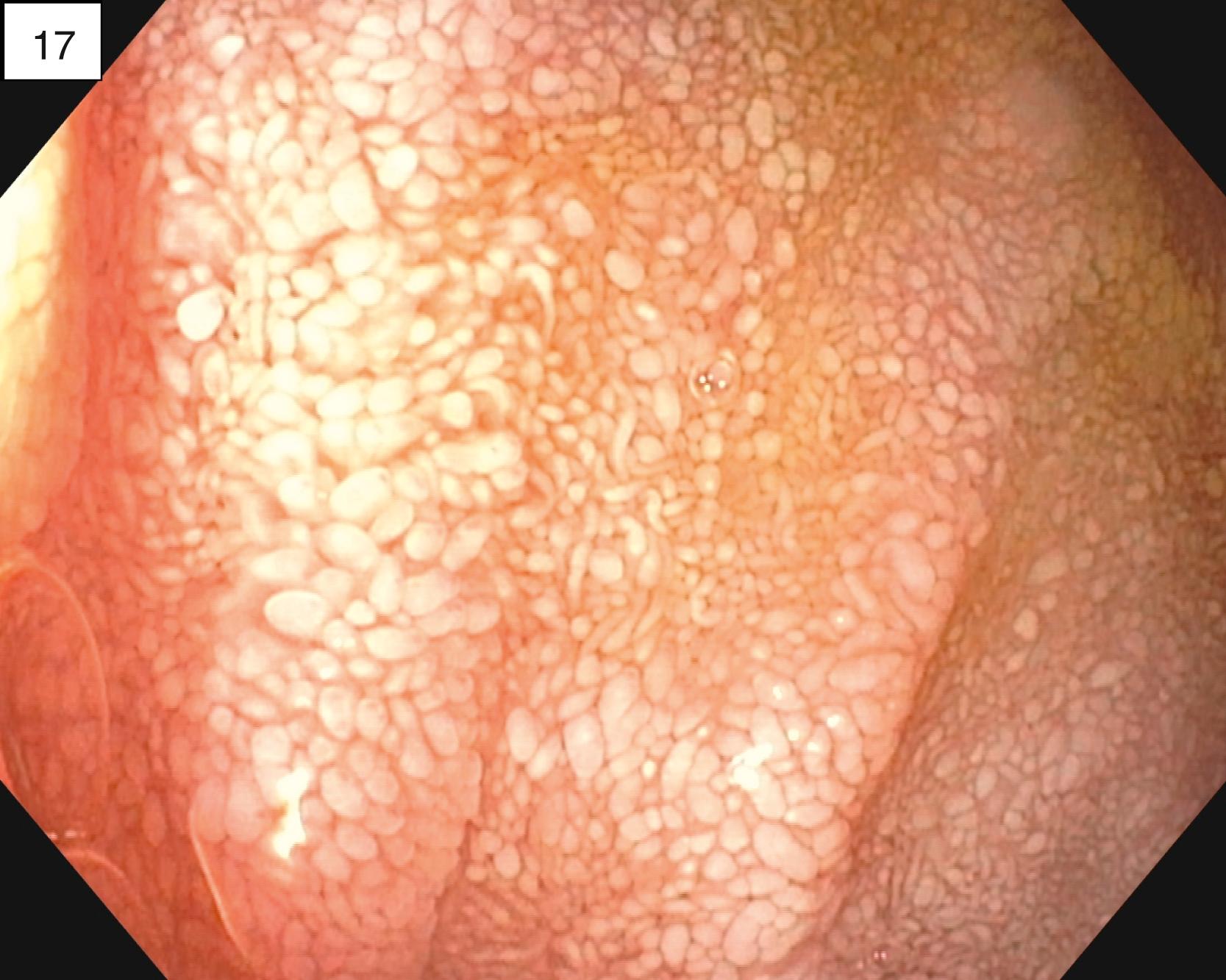Physical Address
304 North Cardinal St.
Dorchester Center, MA 02124
Protein-losing enteropathy (PLE) is a clinical syndrome due to a myriad of etiologies and characterized by excessive gastrointestinal (GI) protein loss. The immediate sequel of this protein loss is hypoproteinemia and edema; additional associated symptoms may include abdominal pain and cramping, diarrhea, ascites, pleural and pericardial effusions, and secondary symptoms from malnutrition. Depending on the etiology, additional constituents of lymph may be lost in the GI tract as well, including fats, fat-soluble vitamins, and immune cells. Mechanisms underlying the varying etiologies of PLE broadly include two main categories: aberrant lymphatic anatomy or lymphatic flow and endothelial dysfunction due to an innate defect, injury, or inflammation.
The interstitial fluid is the antecedent from which lymph arises. As established by Starling, the interstitial fluid is the net ultrafiltrate formed as a result of the balance between hydrostatic and osmotic pressures in the microvascular capillaries. More recently, additions to Starling’s work have highlighted the role of the endothelial glycocalyx in determining both the filtration rate and specific constituents in the plasma filtrate. This filtrate contains electrolytes and water in addition to plasma proteins including albumin, globulins, coagulation factors, proteases, and complement. In addition, the interstitial fluid is comprised of a unique proteome, including proteins from the extracellular matrix as well as components involved in cellular growth, metabolism, and death. Finally, interstitial fluid contains peripherally circulating immune cells and pathogens.
Open-ended lymphatic capillaries, present in all tissues except the brain and retina, collect interstitial fluid for eventual return to the systemic circulation. The capillaries gradually join to form larger vessels, called lymphatic collectors, which are composed of lymphatic endothelial cells anchored to a layer of connective tissue, fibroblasts, and specialized muscle cells. The collectors also contain bicuspid valves at regular intervals that prevent backflow. In addition, the valves along with contraction of muscle cells in the collector walls drive lymphatic flow proximally. Collectors are increasingly larger as more join, ultimately coalescing to form the cisterna chyli in the abdomen. The thoracic duct drains the cisterna chyli superiorly along the left side of the thorax to return lymph to the systemic circulation at the origin of the left innominate vein, the confluence of the jugular and subclavian veins. The thoracic duct also drains the left hemithorax, left arm, and left side of the head; a right-sided thoracic duct drains the right hemithorax, right arm, and right side of the head ( Fig. 33.1 ).

In addition to the above components, lymph contains constituents specific to the tissue in which it arises. In the gut, lymph is formed in lacteals, lymph capillaries intimately associated with arterioles and venules in the villi. Fatty acids and fat-soluble vitamins are absorbed from the lumen into enterocytes and packaged into chylomicrons along with cholesterol esters and lipoproteins. Chylomicrons are exported to the lacteal for transport; thus, the fat composition of lymph arising in the gut is higher than in other organ tissues or the thoracic duct itself. The liver is the primary site of protein synthesis for the body, and hepatocytes export plasma proteins like albumin, ceruloplasmin, and transthyretin to the para-sinusoidal space of Disse. The permeability of the sinusoidal epithelium facilitates significant amounts of lymph to form. Because of these two factors, the liver is responsible for about half of the lymph produced in the body per day, and the lymph it produces is rich in protein. Hepatic lymphatic capillaries drain the space of Disse and typically carry the protein-enriched lymph inferiorly to the cisterna chyli and superiorly to the central lymphatics.
Amino acids and proteins in plasma and proteins in tissues are maintained in an equilibrium, constantly being synthesized and metabolized; typically, 400 g of protein are synthesized and degraded each day as part of this equilibrium. Most plasma proteins other than the immunoglobulins are produced by the liver, which does have the capacity to increase protein synthesis in the setting of increased losses. Thus, clinical manifestations of PLE arise once the rate of protein loss into the gut exceeds the maximum rate of hepatic protein synthesis. Typically, protein losses into the GI tract are minimal, limited to physiologic turnover of the mucosal epithelium and functional secretion. While this represents less than 10% of normal daily albumin catabolism, patients with PLE may clear up to 60% of the plasma albumin pool per day. The proteins that are most affected in PLE and this disruption of equilibrium are those with longer half-lives, particularly albumin, immunoglobulin G, ceruloplasmin, fibrinogen, transferrin, and some binding proteins. Proteins with more rapid turnover such as transthyretin, complement, and insulin are generally maintained at normal concentrations.
In certain renal diseases, protein loss is selective based on the size of the protein and location of the defect. In contrast, in PLE protein loss may occur independent of molecular weight, depending on the etiology of the defect; for instance, mucosal ulcerations associated with inflammatory bowel disease will not be selective due to the macroscopic scale of the mucosal disruption. In PLE due to a systemic inflammatory disease like lupus, disruption of endothelial junctions may allow smaller proteins to leak more freely than larger ones.
The term intestinal lymphangiectasia (IL) has been used to describe disrupted or abnormal small intestinal lymph drainage associated with dilated lymph vessels ( Fig. 33.2 ). It may either be primary or secondary to another disease process. While IL encompasses the congenital etiologies of PLE, it does not have to be present for enteric protein loss to occur. The precise mechanism of protein loss varies based on the underlying process, but the etiologies of PLE have traditionally been categorized into three domains: mucosal injury, increased permeability, and lymphatic obstruction. Even these broad characterizations do not include all etiologies, as PLE may rarely result from a diverse group of other processes. Enteric protein loss may occur diffusely throughout the GI tract or locally from the stomach, small bowel, or large bowel, depending on the etiology. PLE may be congenital or occur secondary to another process.

Become a Clinical Tree membership for Full access and enjoy Unlimited articles
If you are a member. Log in here